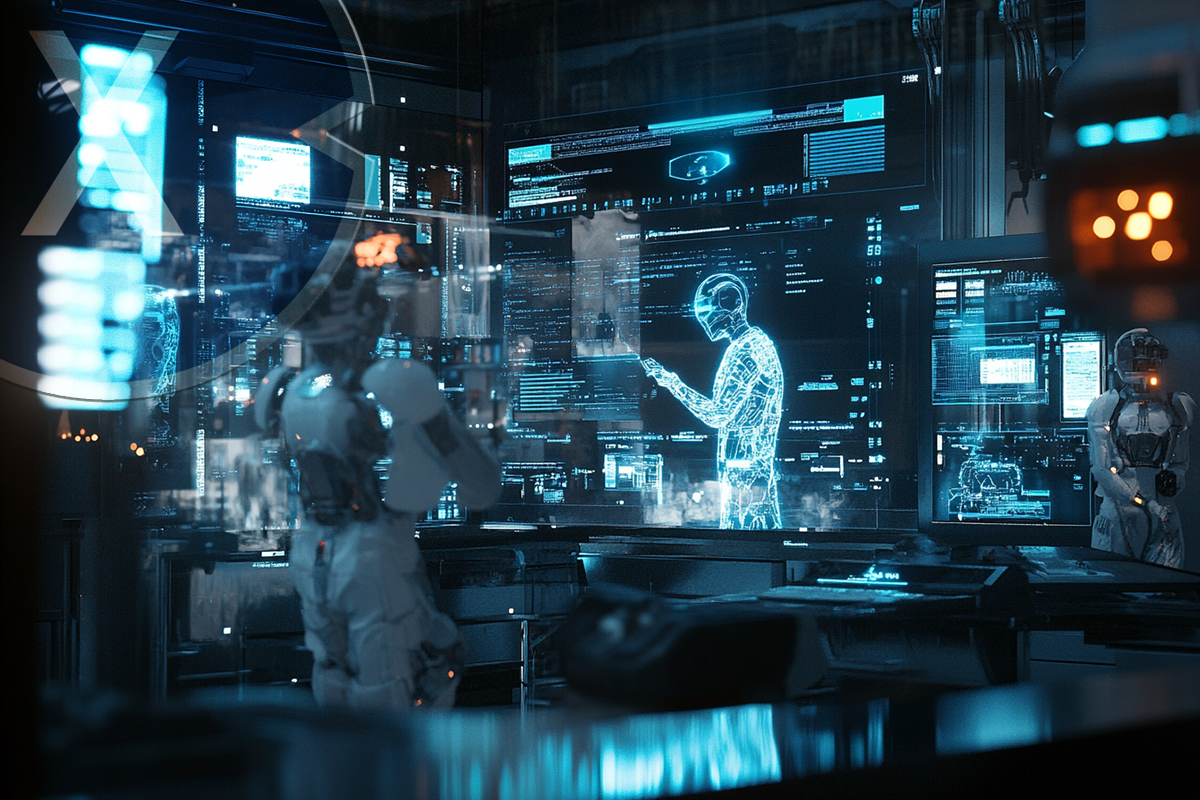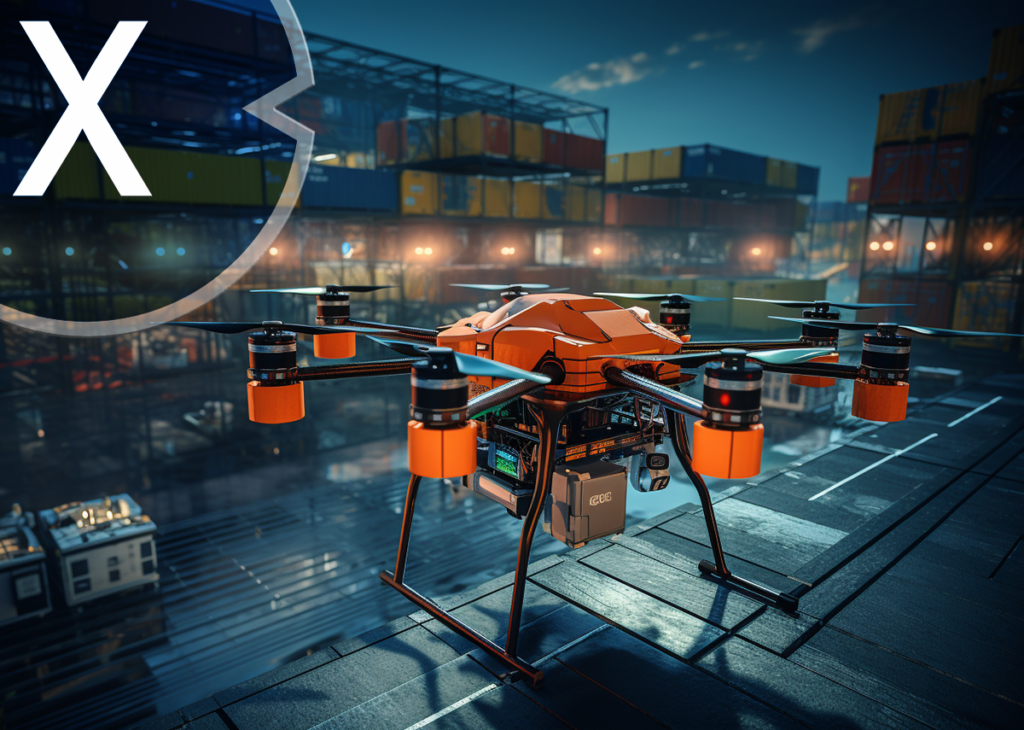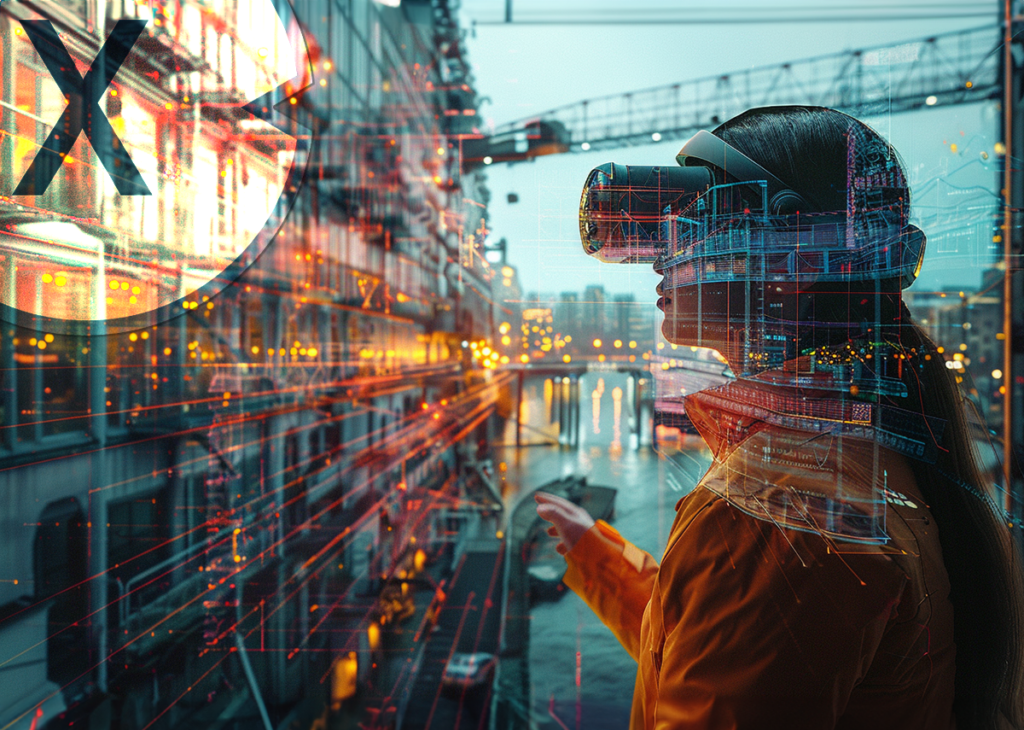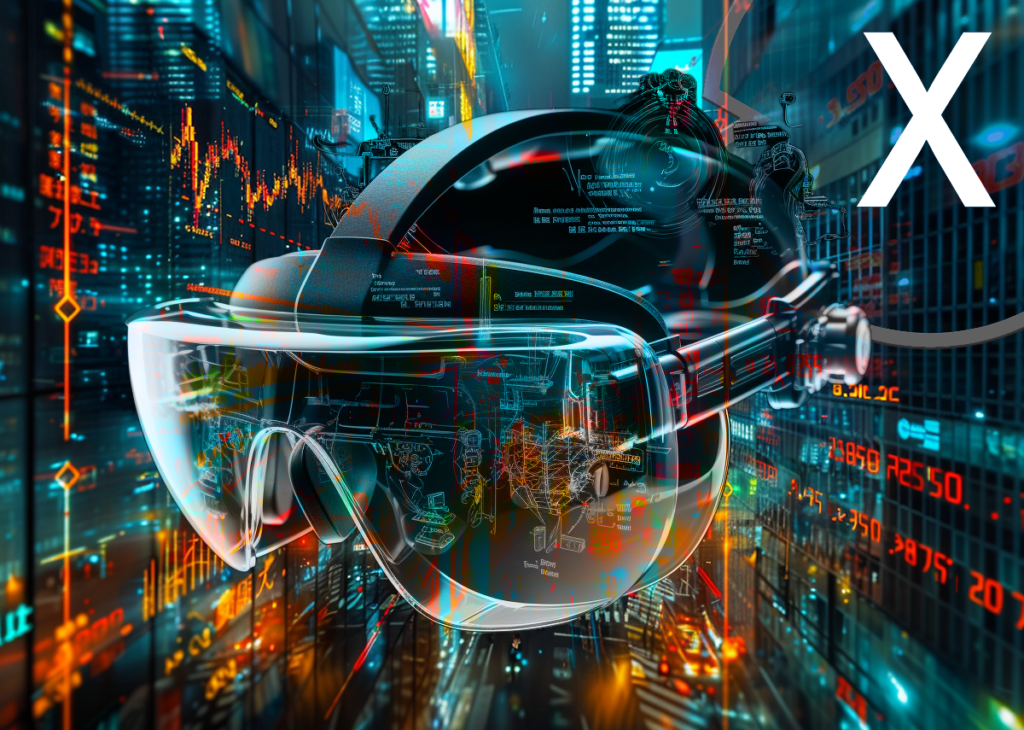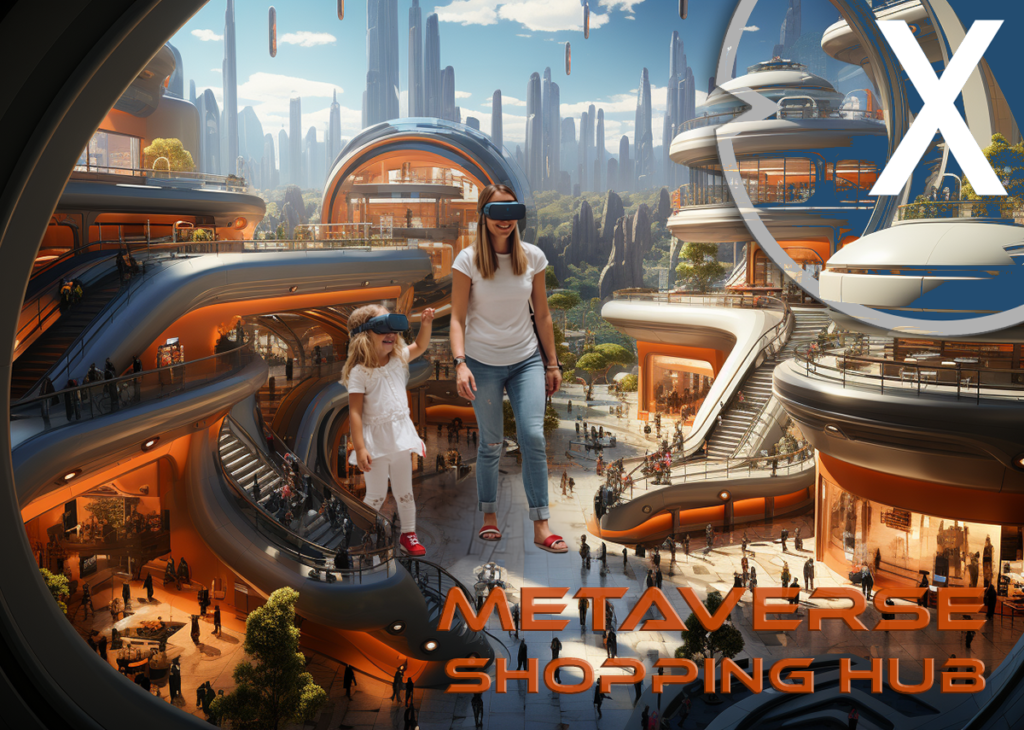Published on: November 10, 2024 / update from: November 10, 2024 - Author: Konrad Wolfenstein
The Metaverse: Moving from Hype to Business Reality
From euphoria to practice: The metaverse in the business world
The Metaverse, a virtual space where physical and digital realities merge, has become an important topic in recent years. It is a prime example of the so-called “Gartner Hype Cycle”. This curve describes how technologies, after initial hype, go through a phase of disappointment before finally entering a phase of productive use. After the initial euphoria has subsided and the “valley of disappointment” has been reached, the metaverse is now on a “path of enlightenment” - meaning it is being used in a targeted and sustainable manner in more and more areas of the company.
New partnerships and use cases: T-Systems and Nvidia as pioneers in the Industrial Metaverse
T-Systems has taken an important step towards industrial use of the Metaverse with its partnership with the chip manufacturer Nvidia. This cooperation aims to advance digital transformation in industry with “Industrial Metaverse” technology. The core of this collaboration is Nvidia's Omniverse platform. Omniverse provides companies with a scalable, future-proof development environment that is particularly suitable for developing models with artificial intelligence (AI). The platform not only offers photorealistic and physically accurate simulations, but also high interoperability, which clearly sets it apart from other Metaverse platforms. This means data sources and existing systems can be seamlessly integrated and managed.
An important advantage of the Omniverse platform is the ability to generate so-called synthetic data. Simulation offers an ideal basis for application areas in which real data is difficult to obtain or in which data protection requirements play a role. For example, a machine can be tested for various faults in virtual space without risking the real device. This ability to play through virtual scenarios and disruptions means companies can develop and test innovations faster and more cost-effectively. The Industrial Metaverse therefore creates an environment in which new machines and processes can be extensively tested and optimized before they are actually implemented.
Further examples of the use of the Metaverse: Bosch, Siemens and the automotive industry
Bosch is another company that is intensively involved in metaverse technologies. The focus here is particularly on optimizing Product Lifecycle Management (PLM), i.e. the management of the entire product life cycle, from design and manufacturing to maintenance and disposal. By using Extended Reality (XR) and Virtual Reality (VR), Bosch has created the ability to efficiently connect tools, infrastructure, suppliers and software. XR and VR not only make it possible to experience designs and models virtually, but also to play through different scenarios and changes without physical prototypes.
The result of this digitalization is more efficient and cost-effective product development. Collaboration with suppliers is optimized through XR and VR, as feedback and suggested changes can be implemented more quickly. Deutsche Bahn, the energy company RWE and the automobile manufacturers BMW and Mercedes also use Metaverse solutions to optimize processes, be it in production, maintenance or customer service. Virtual simulations and immersive technologies can be used to play through scenarios that would involve high costs or risks in reality. For Deutsche Bahn, for example, this means that maintenance work on railway systems can be tested virtually before they are implemented in a real environment.
Siemens, in turn, has recognized the potential of the Industrial Metaverse, particularly in the Erlangen equipment plant. Immersive layout planning is used here to improve collaboration between different departments. In addition, Siemens uses synthetic data for AI and XR-supported training. The results are impressive: through optimized planning and use of virtual training environments, production was increased and energy consumption was reduced. In Siemens' Amberg electronics plant, a production quality of almost 100 percent was even achieved - clear evidence that the Metaverse is not just a gimmick, but brings real benefits for the industry.
Suitable for:
- Industrial Metaverse Digital Twins: Siemens Xcelerator and NVIDIA are building the digital twin in the Omniverse – enterprise solutions
- Industrial metaverse and digital twin in production: Mercedes-Benz builds virtual factories with the NVIDIA Omniverse
The role of AI and synthetic data in the metaverse
Artificial intelligence plays a crucial role in the context of the Metaverse. AI makes it possible to analyze and react to virtual worlds in real time, which is particularly important in the area of autonomous systems. Synthetic data allows machines to learn without relying on large amounts of real data. This is an advantage in many areas, such as the development of autonomous vehicles or complex industrial systems. This allows various scenarios and environments to be simulated in which the system is prepared for dangers or challenges before it is used in real operations.
An example of this is the use of AI training models that are trained to control a machine in a controlled virtual environment. If a problem arises in this environment, the AI model learns to react to it. This process is much more efficient and safer than if the same training was carried out on real machines. The combination of AI, synthetic data and the metaverse enables a kind of “training camp” in which machines and systems can be prepared for reality - a revolutionary way to save time and costs in the industry while increasing safety.
Challenges and future prospects for the metaverse in industry
Despite the promising possibilities, the metaverse also faces challenges. One of the biggest is integration into existing IT structures and ensuring data compatibility. Many companies have older systems that are not designed for use in the metaverse. Therefore, the introduction of metaverse technologies often requires extensive adjustments and investments in the existing IT infrastructure. Another issue is data protection, especially when it comes to using or simulating personal data in virtual environments.
Another aspect is the question of standardization. Various companies are currently working on their own Metaverse solutions, which are often not compatible with each other. In the long term, however, it will be necessary to create uniform standards to enable comprehensive and seamless interoperability between the different platforms and systems. The development of such standards will be critical to unlocking the full potential of the Metaverse and creating a “virtual world” in which diverse systems and technologies can work together in harmony.
Despite these challenges, the potential of the Metaverse in the industry is immense. Experts assume that the Metaverse will develop into an integral part of the corporate landscape in the long term. The areas of application range from virtual training and education to the simulation of production processes to the development of prototypes and digital twins that enable an accurate virtual representation of real machines and systems. These technologies can not only increase efficiency and reduce costs, but also reduce energy consumption and increase workplace safety.
The Metaverse as a pioneer for the future of the industry
The Metaverse has the potential to fundamentally change the way companies work and innovate. The examples from T-Systems, Nvidia, Bosch, Siemens and other companies show that the Metaverse is already being used successfully in various areas. It enables virtual training environments, the optimization of production processes and more effective collaboration across locations and national borders. The metaverse is not just a passing trend, but has the potential to lay the foundation for the industry of the future.
As AI, XR, and synthetic data advance, the metaverse will leave an even deeper mark on the economy in the coming years. The technological and economic conditions have been created - it is now up to companies to recognize and use the full potential of the Metaverse.
Suitable for:
- Which industries are currently booming? Photovoltaics, logistics, AI, 5G networks, drones and digital twins with the Metaverse are included - Image: Xpert.Digital
- Restart for the Metaverse, through winter to spring and discovering new worlds: How XR technology is transforming the Metaverse - Image: Xpert.Digital
- Spatial Computing and More: Your Gateway to Understanding the Metaverse Index – Image: Xpert.Digital
- Current news for companies – Future of logistics/intralogistics – AI & digitalization, renewable energies & PV, Metaverse & XR – Image: Xpert.Digital
- The urban transformation into the City Metaverse – 5 cities are planning their metaverse – Seoul, Dubai, Rome, Tampere & Santa Monica – Image: Xpert.Digital
- Metaverse Shopping Mall with White Label Solutions – V-Commerce Hub in Decentraland and Spatial – Image: Xpert.Digital – AI & XR 3D Rendering Machine (Art Photo/AI)
The Concept of the Metaverse: From Initial Excitement to Real-World Applications
Once hailed as a revolutionary digital frontier, the concept of the metaverse has seen fluctuating levels of enthusiasm. While the initial hype has died down somewhat, the metaverse is far from a forgotten trend. Rather, it is evolving in ways that demonstrate tangible value, particularly in industrial applications and specific areas such as retail, education and entertainment.
Metaverse: From Hype to Real-World Applications
The metaverse can be thought of as a 3D version of the Internet—a network of interconnected virtual spaces in which users interact in real time using avatars. Although it is often associated with gaming and social experiences, its potential extends far beyond these areas. The metaverse is now being integrated into industries such as manufacturing, urban planning, healthcare and retail through technologies such as augmented reality (AR), virtual reality (VR), artificial intelligence (AI) and digital twins.
Current industrial applications
1. Industrial Metaverse
The industrial sector is leading the adoption of the metaverse. Companies like Siemens and BMW use digital twins—virtual replicas of physical assets—to simulate production processes, predict maintenance needs, and optimize operations. For example, Siemens Energy has developed virtual models of power plants to reduce downtime and improve efficiency. The industrial metaverse is expected to grow rapidly, with forecasts valuing the market at $228.6 billion by 2029.
2. Intelligent manufacturing
Integrating digital twins and AR/VR technologies in manufacturing enables real-time monitoring, predictive maintenance and improved collaboration across global teams. This reduces costs associated with physical prototypes and accelerates product development cycles. Automotive companies use these tools to simulate vehicle performance before production and improve both efficiency and sustainability.
3.. Urban planning and smart cities
Urban planners use the metaverse for large-scale simulations of urban environments. Digital twins of cities help visualize energy consumption patterns and optimize infrastructures for long-term sustainability goals. This helps those involved to make informed decisions about future developments.
Retail and customer loyalty
The retail sector is also exploring applications of the metaverse by creating immersive shopping experiences through VR and AR. Virtual storefronts allow customers to try on clothing or interact with products in a highly personalized environment. As companies invest heavily in these immersive experiences, the retail segment within the Metaverse ecosystem is expected to grow significantly.
Education and training
The Metaverse opens up new opportunities for education and corporate training by creating virtual campuses or immersive training environments. These platforms enable employees to conduct hands-on learning without physical risks, especially in industries such as energy or manufacturing where complex machinery is used.
Challenges and future potential
Despite the growing applications, some challenges remain:
High costs
The infrastructure required for fully immersive Metaverse experiences—such as AR/VR hardware—can be expensive to install and maintain.
Interoperability
Creating a seamless experience across different virtual platforms remains a technical hurdle. However, there are efforts to improve interoperability between different digital ecosystems.
Safety concerns
As more economic activities move into the metaverum (e.g. virtual currencies, NFTs), concerns about data security and privacy are increasing.
Nevertheless, the growth potential remains enormous. The global metaverse market is expected to exceed $2 trillion by 2033, driven by advances in AI, blockchain technology and increasing consumer demand for immersive digital experiences.
A transforming landscape
While the initial hype surrounding the metaverse may have cooled, it is far from a forgotten trend. Industries such as manufacturing, urban planning, retail and education are already benefiting from early Metaverse solutions. As enabling technologies such as AI, digital twins, and AR/VR tools continue to mature, the metaverse is likely to become more integrated into industrial processes and daily life.
Rather than being dismissed as a passing trend, the metaverse is gradually proving its worth across multiple sectors. Its full potential may still be several years away from realization, but its current development suggests that it will play a significant role in shaping future digital interactions across various industries.
Suitable for:


